
![]()
Super Smash Bros. Melee
2001
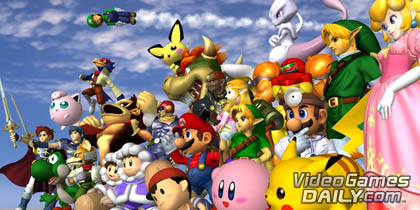
So playful that four young children could button-bash their way to delight; so technical it sits alongside VF5, 3rd Strike and KoF at the annual EVO fighting game tournament; so informative it acts a comprehensive museum for Nintendo’s 120-year history – Super Smash Bros. Melee is all things to all people. The prospect of Nintendo making a fighting game was beyond most people’s comprehension and the finished product doesn’t fit neatly into any preconceived idea of the genre. Unlike more traditional examples, you can’t sit somebody down in front of practice mode and demonstrate SSBB’s best combos – it’s much more organic than that, demanding on-the-fly reactive combos dependent on positioning, damage levels and environmental hazards. The item switch option allows the game to be as chaotic or controlled as the players require, satisfying no item, one-on-one Final Destination purists or out of control four-player pyrotechnic Armageddons. Despite the significant bump in content, Melee edges out competition from its Wii sequel due to the removal of several advanced techniques (such as wave dashing and triangle jumping) and the introduction of the needlessly random tripping.
![]()
Fallout 3
2008
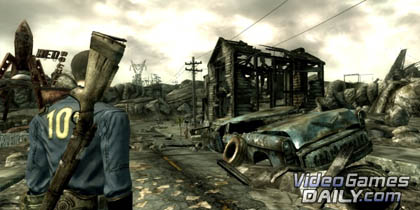
Fallout 3′s medieval brother Oblivion may well have the honour of being the first truly “next-gen” RPG and boast a more substantial world map, but Bethesda’s handling of the cult PC series was a tighter, more streamlined game that successfully married a variety of gameplay styles. The V.A.T.S system took the turn-based mechanics of the original Fallouts and fused them with the spectacle of the Burnout crash, exchanging gaskets for giblets. While ignoring V.A.T.S entirely is not really a sensible option, standard FPS shotgun and sniper rifle tactics could also be employed by the dogged real-time gamer. These gameplay choices are perfectly facilitated by the incredibly open levelling system that allowes you to tailor your character to your exact specification – anything from a stealthy sniper to a brutal berserker. The main quest could be completed in under 15 hours but the stories truly shine in the plentiful side quests that draw on classic 1940s sci-fi material and offer a multitude of ways to complete them. As if over 100 hours of involving content wasn’t enough, Bethesda’s DLC support gave the game an additional years’ worth of new areas, perks, weapons and sub-stories. Fallout 3 is an exceptionally witty, varied, engaging and comprehensive game, and unlike many other 100-hour-plus grinds, it deserves every minute.
Further Reading: Review
![]()
Panzer Dragoon Orta
2003
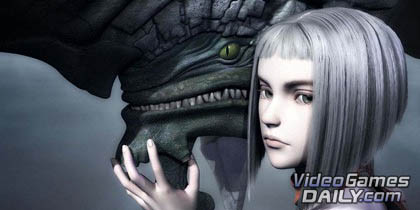
Microsoft’s ubiquity in the PC market meant that there were no shortage of western developers producing early software for their debut console, but it was reaching into their deep pockets to woo Japan’s finest that produced some of the most individual titles on the Xbox – Phantom Dust, Jet Set Radio Future and of course the artistically impeccable Panzer Dragoon Orta. Having succeeded in harnessing the notoriously challenging 3D power of the Saturn, the remains of Team Andromeda ran riot on the Xbox hardware, producing some of the most beautiful visuals seen in a video game. Ostensibly a Space Harrier-style on-rails shooter, Orta’s real-time dragon morphing allowed you to switch between three types of shot/lock-on combinations, which combined with speed-up and slow-down buttons gave an unprecedented degree of flexibility and depth and posed a significant challenge to master. In keeping with previous entries, Orta’s story was masterfully told, demonstrating a subtlety and restraint that is seldom seen in an RPG, let alone in the natural evolution of an arcade genre. Panzer Dragoon Orta is a mesmerising experience and a fitting farewell to one of gaming’s most under-appreciated works of genius.
Further Reading: Review
![]()
Psychonauts
2005
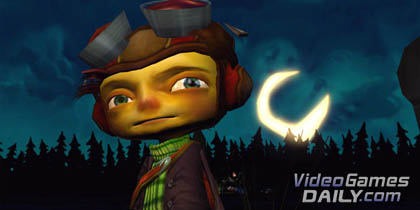
Having displayed complete mastery of the point and click, Tim Schafer’s jump to the platform genre was anything but a leap of faith – instead he infused it with his deep understanding of character development and gameplay integration. The opening hour of the game gives little away, masquerading as a cross between Rayman and an episode of Charlie Brown. Soon the game’s Saturday morning cartoon charm takes on a more sinister tone when you start to explore the brains of Psychonauts’ colourful cast, revealing itself to be a great deal more mature than it first seems. Once party-loving Milla’s seemingly fun-time disco brain exposes the dark history of her guilt over burning children to death in an orphanage it becomes clear this game is not Mario for the Xbox. Imagination runs riot as the game jumps from the video game satire of Lungfishopolis to the hilarity of Jasper the critic. The most expertly integrated level, in terms of both design and theme, was the Milkman Conspiracy – a 1950s-themed level with a unique take on gravity where you could see how NPCs perceive you based purely on items in your possession, in perfect keeping with the 50s American consumerism theme. Psychonauts is a work of intelligent humour, brave originality and rare charm.
Further Reading: Review
![]()
Metal Gear Solid 3: Subsistence
2006
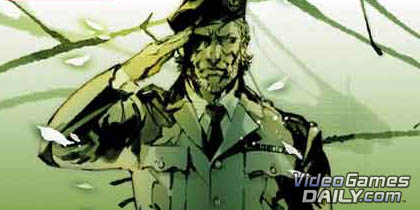
Bookended by two disappointing games – the Snake-less MGS2 and the hideously bloated MGS4 – the original MGS3 made a number of enemies thanks to the elimination of the radar exacerbating the terribly flawed camera. Thankfully Konami’s Subsistence chiselled away at the rough, revealing a diamond that demands attention. As with MGS, the third game was positively bursting with ideas, from the superbly implemented camo-index, to the empowering CQC, to the animal hunting and feeding, to the real-time injuries that lent your heroic avatar a real sense of mortality. The Cobra Unit bosses returned to the kind of innovative post-modern touches that made MGS so memorable, particularly in the option-heavy battle with The End where you could kill him in the middle of a cut-scene, input the Konami code to pinpoint his location or even wait until the PS2 clock had advanced a week to see him die of natural causes. MGS3 managed to recall the glory of MGS with a (relatively) grounded story involving drama, sacrifice and betrayal, even managing to pitch a fairly convincing and rather uncommon maternal relationship that explains series’ villain Big Boss’s fall from grace. As with any MGS, it is gloriously over-produced and marred by outdated controls, but this is big-budget Japanese gaming at its best and consistently demonstrates Kojima’s brilliance.
Further Reading: Review






 Satoru Iwata Video Interview - the late Nintendo president spoke with Kikizo in 2004 as 'Nintendo Revolution' loomed.
Satoru Iwata Video Interview - the late Nintendo president spoke with Kikizo in 2004 as 'Nintendo Revolution' loomed. Kaz Hirai Video Interview - the first of Kikizo's interviews with the man who went on to become global head of Sony.
Kaz Hirai Video Interview - the first of Kikizo's interviews with the man who went on to become global head of Sony. Ed Fries Video Interview - one of Xbox's founders discusses an epic journey from Excel to Xbox.
Ed Fries Video Interview - one of Xbox's founders discusses an epic journey from Excel to Xbox. Yu Suzuki, the Kikizo Interview - we spend time with one of gaming's most revered creators.
Yu Suzuki, the Kikizo Interview - we spend time with one of gaming's most revered creators. Tetris - The Making of an Icon: Alexey Pajitnov and Henk Rogers reveal the fascinating story behind Tetris
Tetris - The Making of an Icon: Alexey Pajitnov and Henk Rogers reveal the fascinating story behind Tetris Rare founders, Chris and Tim Stamper - their only interview? Genuinely 'rare' sit down with founders of the legendary studio.
Rare founders, Chris and Tim Stamper - their only interview? Genuinely 'rare' sit down with founders of the legendary studio. The History of First-Person Shooters - a retrospective, from Maze War to Modern Warfare
The History of First-Person Shooters - a retrospective, from Maze War to Modern Warfare